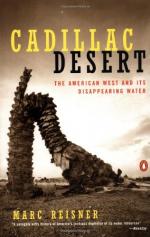
|
| Name: _________________________ | Period: ___________________ |
This test consists of 15 multiple choice questions and 5 short answer questions.
Multiple Choice Questions
1. Floyd Dominy was Bureau of Reclamation Commissioner until what year?
(a) 1977.
(b) 1969.
(c) 1983.
(d) 1942.
2. In what year did Harry S. Truman assume the office of the U.S. Presidency?
(a) 1949.
(b) 1945.
(c) 1937.
(d) 1932.
3. Which mountains separate southern California from the San Joaquin Valley?
(a) The Sierra Nevada.
(b) The Trinity Mountains.
(c) The Cascade Mountains.
(d) The Tehachapi Mountains.
4. By the mid-1920s, thanks to irrigation pumping, California had surpassed what as the richest agricultural state in the country?
(a) Minnesota.
(b) Iowa.
(c) Nebraska.
(d) Illinois.
5. Where was Harry S. Truman born?
(a) Medford, Oregon.
(b) Cody, Wyoming.
(c) Lamar, Missouri.
(d) Pueblo, Colorado.
6. In which year does the author state “the Bureau of Reclamation was just beginning its detailed feasibility investigations of the Kings and Kern River projects”?
(a) 1963.
(b) 1945.
(c) 1919.
(d) 1937.
7. In 1952, when Los Angeles built a second battery of pumps at the head of its aqueduct, California’s diversion climbed toward how many acre-feet?
(a) 2.8 million.
(b) 5.3 million.
(c) 8.2 million.
(d) 12.5 million.
8. San Francisco is just slightly rainier than which Mexican city, according to the author in Chapter Ten?
(a) Tijuana.
(b) Monterrey.
(c) Mexico City.
(d) Chihuahua.
9. The author describes a restaurant at which hotel in Clayton, Georgia, in the beginning of Chapter Nine?
(a) The Richardson Motor Lodge.
(b) The Dillard Motor Hotel.
(c) The Bellingham Hotel.
(d) The Davis Lodge.
10. In which year did Jimmy Carter begin his term as the 39th President of the United States?
(a) 1969.
(b) 1977.
(c) 1965.
(d) 1981.
11. Every year, the Mississippi River carries about how many acres-feet of water out to sea, according to the author in Chapter Six?
(a) 160 million.
(b) 765 million.
(c) 355 million.
(d) 55 million.
12. What organization does the author refer to “as opportunistic and ruthless an agency as American government has ever seen” in Chapter Six?
(a) The Federal Bureau of Investigation.
(b) The Internal Revenue Service.
(c) The Bureau of Alcohol, Tobacco, and Firearms.
(d) The Corps of Engineers.
13. What was the eleventh-largest landowner in California in 1980?
(a) The Tenneco Corporation.
(b) Irvine Ranch.
(c) Sierra Pacific Industries.
(d) The DiGiorgio Company.
14. On what date did Franklin Roosevelt dedicate the Hoover Dam?
(a) December 4, 1942.
(b) April 25, 1907.
(c) September 30, 1935.
(d) June 6, 1928.
15. The author states there are currently how many acres of cultivated land per person in the U.S. in Chapter Six?
(a) 9.
(b) 2.
(c) 1.
(d) 5.
Short Answer Questions
1. In which year did Secretary of State Cordell Hull formally promise Mexico the 1.5 million acre-feet that had been set-aside for it by the Colorado River Compact?
2. According to the author in Chapter Ten, “Figures for 1946, published in a Senate report on the acreage limitation, reveal that Standard Oil owned” how many acres in the probable CVP service area?
3. What is the title of Chapter Eight?
4. In what year did the Hohokam culture disappear?
5. In what county is Phoenix, Arizona?
|
This section contains 426 words (approx. 2 pages at 300 words per page) |

|




